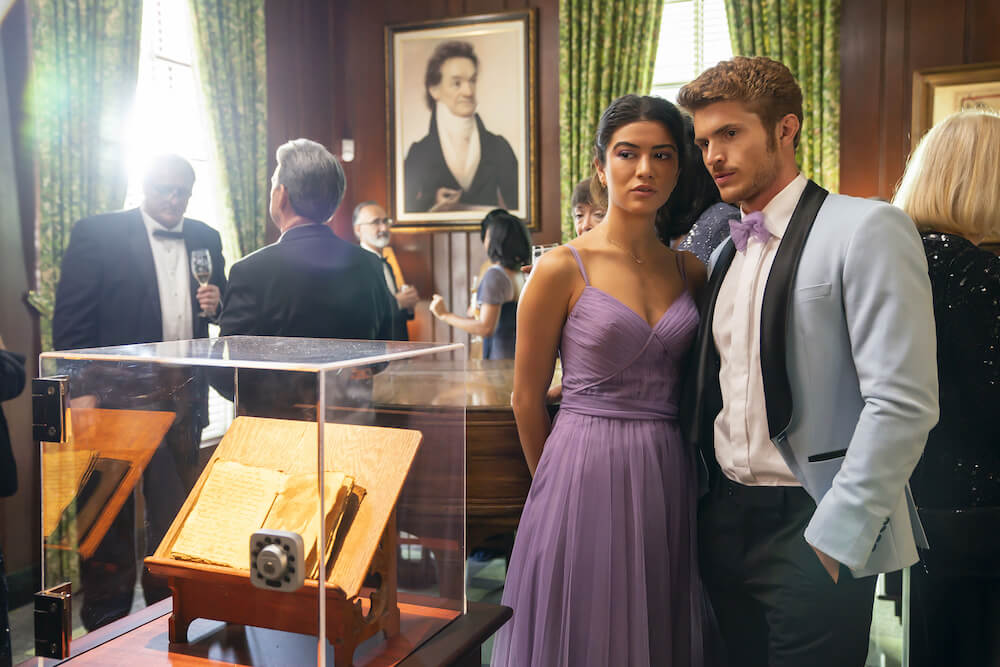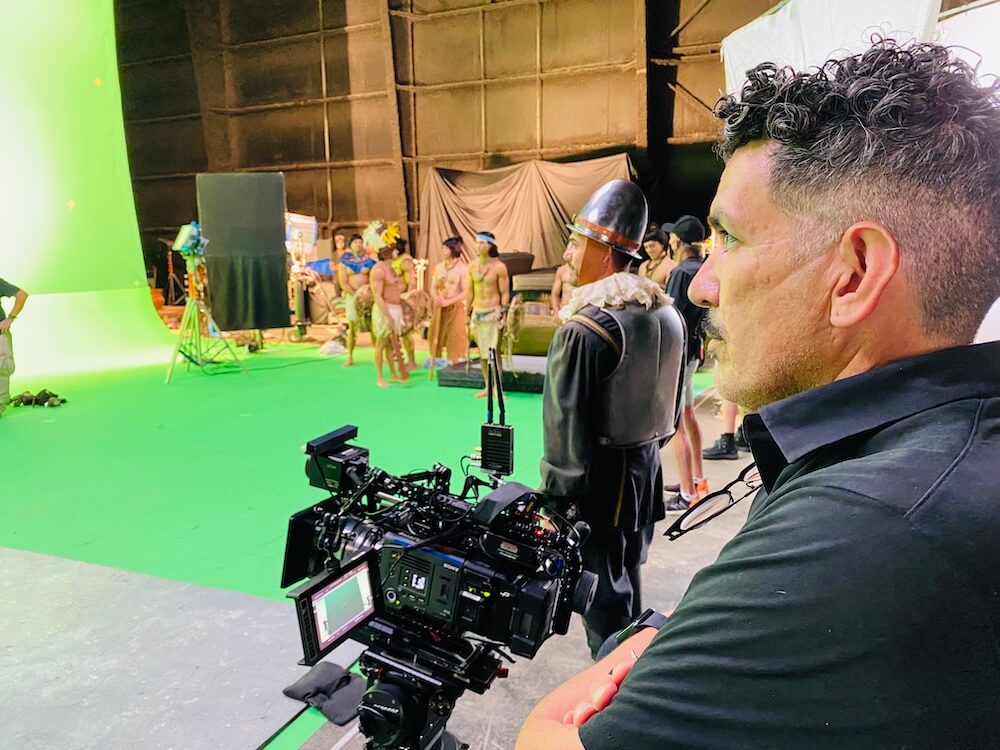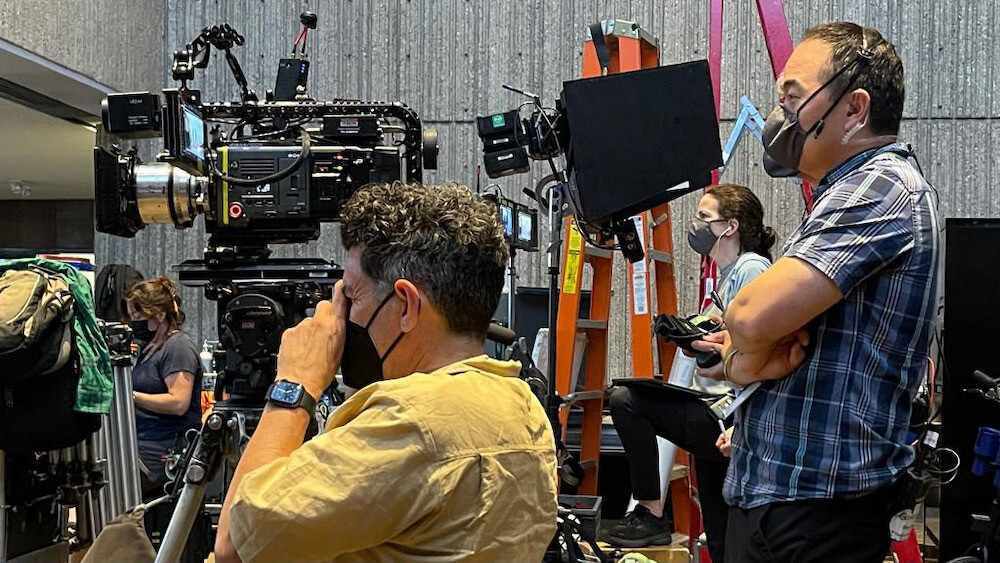Cinematographer Abraham Martínez on National Treasure: Edge of History

The popular National Treasure franchise has embarked upon a new adventure on Disney+. The 10-episode first season of National Treasure: Edge of History follows 20-year-old Jess Valenzuela (played by Lisette Olivera) as she joins the hunt for a much sought-after lost treasure and, in so doing, unlocks her own family’s hidden history. Following Declan Quinn, ASC’s work on the pilot episode and working with settings that evoked the rich palettes of famed Mexican muralists, cinematographer Abraham Martínez worked alongside fellow director of photography Tom Camarda to craft a cohesively colorful look for the series.
Supported by Panavision New Orleans, the filmmakers embraced VA large-format spherical primes to help them bring history to life. Panavision recently connected with Martínez to further explore the inspirations and personal history he brought to the production.

Panavision: How would you describe the look of the series?
Abraham Martínez: Season 1 launches as an offshoot of the National Treasure universe, which is about an explorer’s journey, this time with a woman lead. The explorer’s wonder offered many ranges of looks for the show. As the series centers on treasure, we leaned into the warmth of treasure and the coolness of the chase, which offered loads of opportunities for camera movement. Similar to the movie franchise, we take the adventure to a range of settings and topography. From the jungles of South America, to the outskirts of Mexico City, to the Alamo in San Antonio, alternating DP Tom Camarda and I were able to create a range of looks as the characters look for clues to the treasure.
How did you and Tom ensure there would be a consistency and unified look across the episodes you were each shooting?
Martínez: Tom and I were locked-in with the same tools and team, so we had our baseline for consistency. We also understood that each of us had our own adventures to capture, offering us the chance to play with color and techniques that enhanced Jess’ journey.
Were there any particular visual references you looked at for inspiration?
Martínez: Yes! For me personally, as a Mexican-American, I was excited that the show offered an opportunity to explore the rich beauty and history of color and tones of our Mexican muralist heritage. I researched ‘The Three Great’ muralists: Diego Rivera, José Clemente Orozco and David Alfaro Siqueiros. All three had a unique perspective on color and contrast and an eye for history that was full of both playfulness and tension. I approached their work as if looking for clues for color, contrast and composition that I could take with me for inspiration.

What brought you to Panavision for this project?
Martínez: I’ve been working with Panavision since the late ’90s when I was a film loader. My first movie in the film industry was with cinematographer Ralf Bode, and from then on, Panavision has been a home for me. While I was working my way up through the camera department, other cinematographers I worked alongside used Panavision as well, such as Robert Elswit, ASC; Dean Cundey, ASC; Donald McAlpine, ASC, ACS; Amir Mokri; and Bill Pope. Panavision has been consistent in their support all throughout my camera-department career.
I’m thankful for all of Panavision’s reps from coast to coast who help provide the tools, solutions and logistics to get what I need as a photographer who lives on the road. It’s an ongoing dialogue of support.
You shot in large format with prototype VA primes. What optical characteristics did you see in those lenses that made them the right match for the show?
Martínez: The VA large-format lenses have a familiarity that I can’t quite put my finger on — in a beautiful way. It feels like they embrace warm and cool colors equally, allowing both to play on our camera sensor without either one overpowering the other. I also see an artful balance of sharpness and softness in their bokeh. There was never a need to add diffusion filters to help smooth out the image. I loved the lenses so much that I rolled them onto my next series, Obliterated, for Netflix.
What did this project mean to you on a personal level?
Martínez: The lead character is on a journey to uncover her personal history, and it was the same for me and my heritage. I looked into my own past while I was working on the series, and I was inspired to learn more about my family history. I went as far back as the 1700s, uncovering my indigenous and Spanish roots.
There has always been tension and challenges of identity for any group of people who are displaced, and I view the explorer as a displaced person, an immigrant, a dreamer. Each journey is an opportunity to use one’s gifts, which is ultimately the treasure for all of us. That’s the story of our lead, Jess Valenzuela.

What inspired you to become a cinematographer?
Martínez: After watching The Killing Fields — shot by Chris Menges, BSC, ASC — in middle school, I wanted to become a combat cameraperson, but by my senior year in high school, I realized I was in love with movies. Fortunately, every step of the way, I’ve had tremendous support and love from my camera-department family, who have encouraged me along the way to my own adventurous journey.